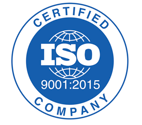In recent years, software has become an increasingly prevalent factor in multiple industries, and the medical device community is no exception. The main two types of software with respect to medical devices are (i) “software as a medical device” or “SaMD” and (ii) “software in a medical device” or “SiMD”, and differentiating between the two can often be tricky.
The international medical device regulators forum (IMDRF), of which the FDA is a member, defines SaMD as "software intended to be used for one or more medical purposes that perform these purposes without being part of a hardware medical device." In other words, the software itself is the device and needs to operate independently from other medical devices. The IMDRF further provides the following points regarding SaMD:
- SaMD is a medical device and includes in-vitro diagnostic (IVD) medical device;
- SaMD is capable of running on general purpose (non-medical purpose) computing platforms;
- “without being part of” means software not necessary for a hardware medical device to achieve its intended medical purpose;
- Software does not meet the definition of SaMD if its intended purpose is to drive a hardware medical device;
- SaMD may be used in combination (e.g., as a module) with other products including medical devices;
- SaMD may be interfaced with other medical devices, including hardware medical devices and other SaMD software, as well as general purpose software;
- Mobile apps that meet the definition above are considered SaMD.
SiMD (commonly referred to as embedded software) is unable to operate separately from its device; it needs the device to function. Software that helps to run a device, controls the device remotely, or processes information produced by the device is considered SiMD. Software in this category is regulated together as part of the whole device.
One common example to help differentiate between SaMD and SiMD relates to an MRI. The software that evaluates the MRI images is SaMD while the software that controls the MRI machine is SiMD.
With respect to the U.S., the FDA recognized the need for guidance specific to medical device software since it does not represent the traditional medical device that was contemplated under many of the general medical device regulations. Consequently, the FDA has released several guidance document over the years, including draft guidance titled “Content of Premarket Submissions for Device Software Functions” issued in November 2021. This guidance provides recommendations regarding the nature and types of documentation to include in premarket submissions and pertains to both SaMD and SiMD. Some of the topics covered include documentation levels, risk management files, software requirements specifications (SRS), and software design specification (SDS). A link to this guidance document is provided here.
https://www.fda.gov/media/153781/download
The European Commission (“EC”) has not been quite as active in publishing guidance specific to medical device software. Manufacturers are advised to follow the guidance within Medical Device Regulation (2017/745) “EU MDR” and In Vitro Diagnostic Regulation (2017/746) “IVDR”, as applicable. Additionally, a helpful reference document would be the EC’s Guidance on Qualification and Classification of Software in Regulation (EU) 2017/745 – MDR and Regulation (EU) 2017/746 – IVDR, which can be found here.
https://ec.europa.eu/docsroom/documents/37581
Software is expected to continue to expand throughout the medical device community and therefore obtaining a thorough understanding of the applicable regulations is critical to ensure timely market launches and ongoing compliance.
Are you interested in learning more?



